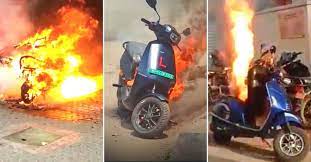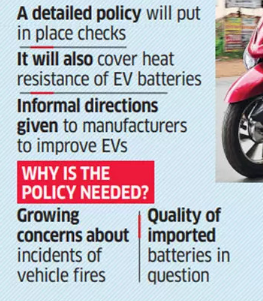Free Courses Sale ends Soon, Get It Now


Free Courses Sale ends Soon, Get It Now



Disclaimer: Copyright infringement not intended.
Context
Background
Steps being taken
Components of Li-ion battery
Features of Lithium-ion batteries
|
A variation on lithium-ion batteries, called lithium-ion polymer batteries, may also prove valuable to the future of EVs. These batteries may eventually cost less to build than lithium-ion batteries; however, at the present time, lithium-ion polymer batteries are prohibitively expensive. |
What causes battery fires?
Preventing Fires
Way Ahead

https://indianexpress.com/article/business/commodities/ev-fires-govt-sets-up-panel-to-suggest-certification-testing-sops-for-batteries-8013657/
© 2024 iasgyan. All right reserved